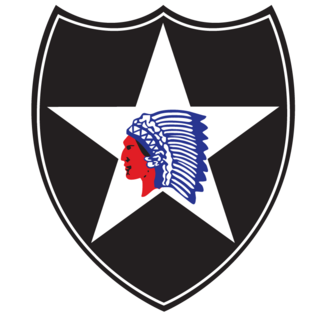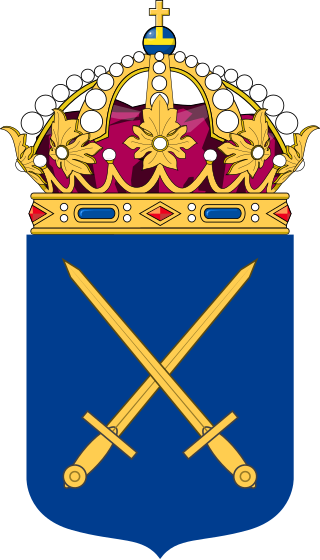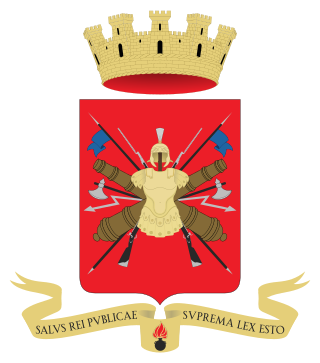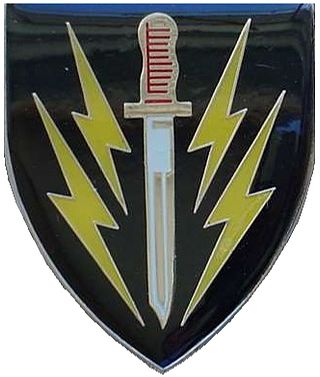
The 2nd Infantry Division ("Indianhead") is a formation of the United States Army. Since the 1960s, its current primary mission is the pre-emptive defense of South Korea in the event of an invasion from North Korea. There are approximately 17,000 soldiers in the 2nd Infantry Division, with 10,000 of them stationed in South Korea, accounting for about 35% of the United States Forces Korea personnel. Denoted the 2nd Infantry Division-ROK/U.S. Combined Division (2ID/RUCD), the division is augmented by rotational Brigade Combat Teams (BCTs) from other U.S. Army divisions.

The 1st Infantry Division (1ID) is a combined arms division of the United States Army, and is the oldest continuously serving division in the Regular Army. It has seen continuous service since its organization in 1917 during World War I. It was officially nicknamed "The Big Red One" after its shoulder patch and is also nicknamed "The Fighting First." The division has also received troop monikers of "The Big Dead One" and "The Bloody First" as puns on the respective officially sanctioned nicknames. It is currently based at Fort Riley, Kansas.

The Swedish Army is the land force of the Swedish Armed Forces. The army's history dates back to the Swedish War of Liberation in 1521.

The United States Army Special Operations Command (Airborne) (USASOC ( YOO-sə-sok)) is the command charged with overseeing the various special operations forces of the United States Army. Headquartered at Fort Liberty, North Carolina, it is the largest component of the United States Special Operations Command. It is an Army Service Component Command. Its mission is to organize, train, educate, man, equip, fund, administer, mobilize, deploy and sustain Army special operations forces to successfully conduct worldwide special operations.

The 14th Armored Division was an armored division of the United States Army assigned to the Seventh Army of the Sixth Army Group during World War II. It remains on the permanent roll of the Regular Army as an inactive division, and is eligible for reactivation. The division is officially nicknamed the "Liberators".

The Italian Army is the land force branch of the Italian Armed Forces. The army's history dates back to the Italian unification in the 1850s and 1860s. The army fought in colonial engagements in China, Libya, Northern Italy against the Austro-Hungarian Empire during World War I, Abyssinia before World War II and in World War II in Albania, Balkans, North Africa, the Soviet Union, and Italy itself. During the Cold War, the army prepared itself to defend against a Warsaw Pact invasion from the east. Since the end of the Cold War, the army has seen extensive peacekeeping service and combat in Afghanistan and Iraq. Its best-known combat vehicles are the Dardo infantry fighting vehicle, the Centauro tank destroyer and the Ariete tank and among its aircraft the Mangusta attack helicopter, recently deployed in UN missions. The headquarters of the Army General Staff are located in Rome opposite the Quirinal Palace, where the president of Italy resides. The army is an all-volunteer force of active-duty personnel.

Future Combat Systems (FCS) was the United States Army's principal modernization program from 2003 to early 2009. Formally launched in 2003, FCS was envisioned to create new brigades equipped with new manned and unmanned vehicles linked by an unprecedented fast and flexible battlefield network. The U.S. Army claimed it was their "most ambitious and far-reaching modernization" program since World War II. Between 1995 and 2009, $32 billion was expended on programs such as this, "with little to show for it".

61 Mechanised Battalion Group was a unit of the South African Infantry Corps; although it was classed as mechanized infantry, it was a combined arms force consisting of infantry, armour and artillery.

The brigade combat team (BCT) is the basic deployable unit of maneuver in the U.S. Army. A brigade combat team consists of one combat arms branch maneuver brigade, and its assigned support and fire units. A brigade is normally commanded by a colonel (O-6) although in some cases a brigadier general (O-7) may assume command. A brigade combat team contains combat support and combat service support units necessary to sustain its operations. BCTs contain organic artillery training and support, received from the parent division artillery (DIVARTY). There are three types of brigade combat teams: infantry, Stryker, and armored.

The Commandos are a special forces unit in the Portuguese Army. Presently, their parent unit is the Commando Regiment.

The Army Strategic Reserve Command is a combined-arms formation of the Indonesian Army. Kostrad is a Corps level command which has up to 35,000 troops. It also supervises operational readiness among all commands and conducts defence and security operations at the strategic level in accordance with policies under the command of the commander of the Indonesian National Armed Forces. In contrast to its name ("Reserve"), Kostrad is the main warfare combat unit of the Indonesian Army. While Kopassus is the elite-special forces of the Indonesian Army, Kostrad as "Komando Utama Operasi" or "Principal Operational Command" still maintains as the first-line combat formation of the Indonesian National Armed Forces along with the Kopassus.

The Philippine Marine Corps (PMC) is a naval infantry force under the command of the Philippine Navy. The PMC conducts amphibious, expeditionary, and special operations missions.

Military organization (AE) or military organisation (BE) is the structuring of the armed forces of a state so as to offer such military capability as a national defense policy may require. Formal military organization tends to use hierarchical forms.

The Ukrainian Ground Forces, also referred to as the Ukrainian army, are the land forces of Ukraine and one of the eight branches of the Armed Forces of Ukraine. They were formed from Ukrainian units of the Soviet Army after Ukrainian independence, and trace their ancestry to the 1917–22 army of the Ukrainian People's Republic.

The 528th Sustainment Brigade (Airborne), 528th Sustainment Brigade (SO) (A), or 528th SB (SO) (A) was activated on 16 December 2008, as part of the overall United States Army Special Operations Forces logistics transformation. The brigade replaced the Special Operations Support Command (Airborne) (SOSCOM) as combat service support and combat health support unit for all Army Special Operations Command (USASOC) units under the 1st Special Forces Command (Airborne).

The Manned Ground Vehicles (MGV) was a family of lighter and more transportable ground vehicles developed by Boeing and subcontractors BAE Systems and General Dynamics as part of the U.S. Army's Future Combat Systems (FCS) program. The MGV program was intended as a successor to the Stryker of the Interim Armored Vehicle program.
FCS/BCT unmanned aerial vehicles were several unmanned aerial vehicles developed under the jurisdiction of the Future Combat Systems (FCS) program until it was dissolved and succeeded by the BCT Modernization program.
The 827th Tank Destroyer Battalion was a tank destroyer battalion of the United States Army active during the Second World War. It was activated in April 1942 as a segregated African American unit, deploying to Europe at the end of 1944 and attached to 12th Armored Division. It saw action during Operation Nordwind in January 1945, where elements of the battalion performed creditably. However, its overall combat record was marred by severe disciplinary problems and insufficient training. It was withdrawn in February, and assigned to rear-area duties; while it nominally remained active for the remainder of the war, it had been effectively disbanded.
Future Soldier is a reform of the British Army resulting from the Integrated Review of Security, Defence, Development and Foreign Policy published in March 2021. The aim of the reform is to create a more lethal, agile and expeditionary force, able to fight and win wars and to operate in the grey-zone between peace and war. Future Soldier was published on 25 November 2021 and deals with the organizational changes of the British Army, with changes to personnel and equipment were set out in the Defence in a Competitive Age paper published on 22 March 2021.















